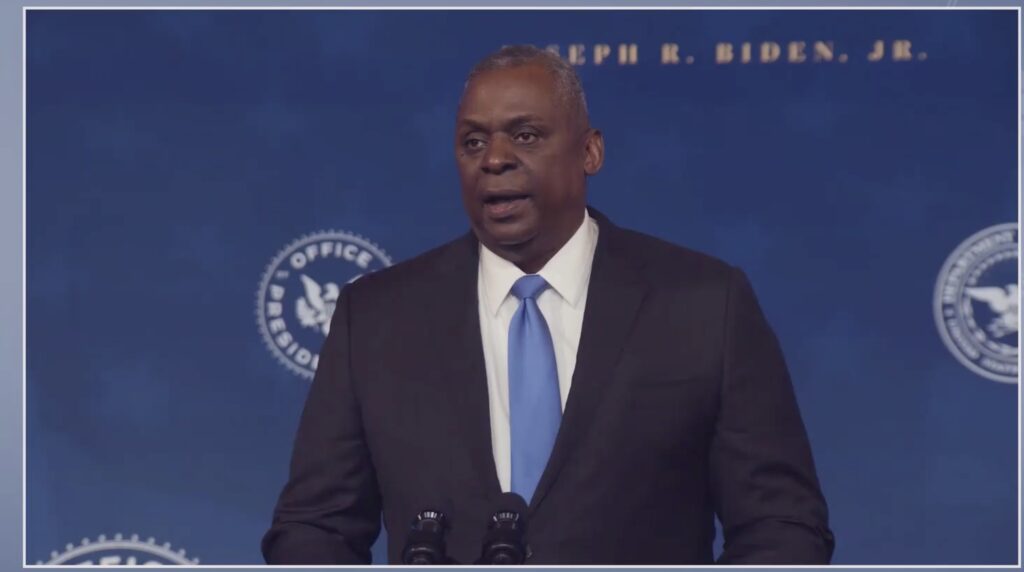
Lloyd Austin after being nominated by President-elect Joe Biden in Delaware on Dec. 9
WASHINGTON: One legacy of the Trump Administration that looks likely to endure under Biden: a willingness to stand up to Beijing.
Some observers expected the Biden Administration to take a more hands-off approach to the Chinese threat, with Trump even posting an attack add that called Biden “China’s puppet.” But based on testimony from retired Gen. Lloyd Austin, Biden’s nominee for Secretary of Defense, early indications are that Trump has changed the terms of the strategic debate.
The United States must do more to counter China’s “aggressive and coercive actions,” Austin told the Senate, saying Beijing “presents an increasingly urgent challenge to our vital interests in the Indo-Pacific region and around the world.”
Austin, who appears likely to win Senate approval, said in answers to written questions from the Senate Armed Services Committee that the US needs “a more resilient and distributed force posture in the Indo-Pacific in response to China’s counter-intervention capabilities, supported by new operational concepts.”
Austin said he’d “review our posture in the Pacific from all aspects including presence, capabilities, logistics, exercises, infrastructure, and capacity building and cooperation with allies and partners.”

Chinese artificial island in the South China Sea
When the SASC asked him for his assessment of the central national security issue for China — the issue of Taiwan — he cited Biden’s many comments “that U.S. support for Taiwan must remain strong, principled, and bipartisan,” and he appeared to indicate US arms sales to the island state would continue when necessary.
“If confirmed, I will also ensure the United States meets our commitment to assist Taiwan in maintaining a sufficient self-defense capability. Doing so increases stability both across the Taiwan Strait and within the region,” he said in the written questions. “At the same time, we will further buttress peace and stability by developing new concepts and capabilities to strengthen our own deterrent in the region.”
Drilling down, the SASC asked Austin about China’s “massive shipbuilding program,” which is designed to ensure the Peoples Republic of China “has almost 100 more ships than the U.S. Navy by 2030.” He didn’t offer any prescription, which is not surprising since he made clear in responses to other questions that he will “review both the Future Naval Force Study and shipbuilding plan in detail and work with Navy leadership to develop a well calibrated shipbuilding plan,” while also taking a fresh look at the “Navy’s assessment of current and future risks in performing its assigned missions, and in supporting the requirements of the joint force, and work with Navy leadership to address those risks.”
Northrop sees F-16 IVEWS, IBCS as ‘multibillion dollar’ international sales drivers
In addition, CEO Kathy Warden says the company sees a chance to sell up to five Triton UAVs to the NATO alliance.


























